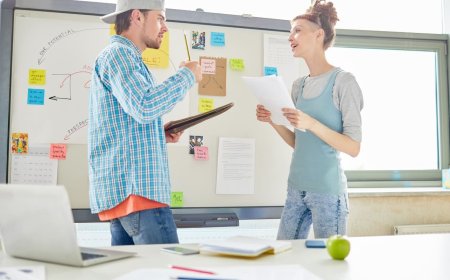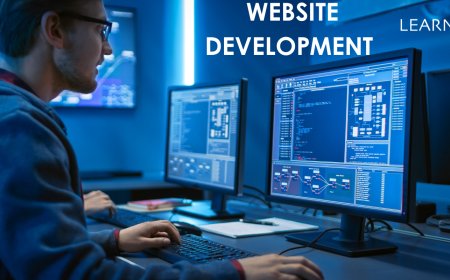How to Use Data Science Tools
Learn how to use Data Science Tools effectively to analyze data, understand it better, and make smart decisions. Find out techniques and best practices in simple words.

In data science, knowing how to work with tools is important. These tools help us find important stuff in a lot of data. From getting data to showing it in graphs, every step needs the right tools. This article talks about how to use data science tools well. Data science includes lots of things like machine learning, deep learning, and making data look nice. Using data science tools helps people and companies make good choices and do well in today's world, which is all about data.
First, we need to get the data. We might get it from databases or the internet. Picking the right tools for this step is important. Then, we need to clean up the data and get it ready to study. Next, we use fancy math to find patterns and make guesses about the data. These guesses help businesses learn cool things from big amounts of data and come up with new ideas.
Making the data look nice is also important. We use charts and graphs to show what we found in a way that's easy for people to understand. It's also important to think about ethics. We need to make sure the tools we use are fair and honest. So, knowing how to use data science tools means not just being good with computers, but also caring about doing the right thing.
Using Data Science Tools for Business Success
Using data science tools smartly is important for businesses to do well in competition. These tools like getting data, using machines to learn, and showing data in pictures have changed how companies work. They give us great ideas and chances to grow. Getting data is the first step. We need to gather the right info from different places. There's a lot of data out there, so we need good plans to collect it. Machines that can learn and understand deep stuff from big piles of data help a lot. They find patterns and make predictions that help us make good choices. They make things easier and help us find new ideas and ways to work better.
Showing data in pictures is also important. It helps everyone understand the info quickly. With graphs and charts, we can see what's happening and decide what to do next. We also need to use AI responsibly. This means we should use these tools fairly and be honest about how we use them. We need to keep looking at data and changing our plans as things change in the world. So, using data science tools is important for businesses to grow and succeed today. They help us find new ways to work, make things better, and stay ahead of the competition.
Tackling Challenges in Using Data Science Tools
In data science, there are big challenges to overcome when using tools. Technology keeps getting better, but the tools we use can be complicated. Let’s talk about the problems we face when dealing with these complex data science tools.
1. Problems with Putting Tools Together: One big issue is making different data science tools work together smoothly. Each tool has its own rules and formats, which can make it hard to make them all work together. Instead of focusing on analyzing data, people end up spending a lot of time fixing problems with how the tools fit together.
2. Tools Are Hard to Learn: Many data science tools are powerful, but they’re also hard to learn. Beginners can feel overwhelmed by how complicated they are. Learning more than one tool at once can make it even harder, slowing down progress on projects.
3. Dealing with Big Data: When data sets get big and complicated, some tools can’t handle them well. This can slow down how fast we can analyze the data and make it harder to get good results. Making tools that can handle big data can be expensive and take a lot of resources.
4. Keeping Tools Up to Date: Technology is always changing, so data science tools are always getting updates. These updates can be good because they make the tools better, but they can also cause problems. Sometimes updates don’t work well with other tools or need us to change how we use them. Keeping up with all these changes can be hard, especially for teams with lots of projects going on.
5. No Standard Way of Doing Things: There are a ton of different tools out there for data science, but they don’t all work the same way. This can make it hard for organizations to pick the right tools for what they need to do. Without clear standards or best practices, it’s easy to waste time and resources using the wrong tools.
6. Keeping Data Safe: Data scientists have to be careful about keeping data safe and following privacy rules. It’s important to make sure that the tools we use keep data private and secure. But it’s not always easy to add security measures without making the tools harder to use.
How can you effectively use Data Science Tools?
To make the most of data science tools, start by understanding what they do. Some popular ones include Python, R, and libraries like Pandas, NumPy, and sci-kit-learn. These tools help with things like analyzing and manipulating data, and even building machine learning models. Start by learning the basics through tutorials or online courses, then try real projects to get hands-on experience. Keep up with updates to stay current. The more you practice and experiment, the better you'll get at using these tools to solve problems.
Understanding Data Science Tools
Data science is super important for businesses today. It helps them learn cool stuff from a ton of data. But to do that well, you need the right tools. Here's a guide to some important data science tools that every aspiring data scientist should know about:
1. Python: Python is the main tool for data science. It's simple and can do a lot of different things. With Python, you can easily work with data and make cool charts and graphs.
2. R Programming: R is another language for data science. It's good for doing stats stuff. You can make nice graphs and analyze data easily with R.
3. SQL: SQL is all about managing and asking questions to databases. Data scientists use it to get data from databases and do things with it.
4. Jupyter Notebook: Jupyter Notebook is a tool where you can write code, make cool charts, and explain what you're doing. It's great for showing your work to others.
5. TensorFlow: TensorFlow is a powerful tool for making machine learning models. It helps you build and train models, especially for things like neural networks.
6. Scikit-learn: Scikit-learn is another tool for machine learning, but it's easier to use. You can do lots of different things like classification and regression with it.
7. Tableau: Tableau is for making nice charts and graphs that you can share with others. It's easy to use and helps you show your data in a cool way.
8. Apache Spark: Apache Spark is for working with big data. It's fast and can handle lots of data at once. You can do things like machine learning and graph processing with it.
9. Hadoop: Hadoop is also for big data. It helps you store and work with huge datasets. It's not just for data science, but it's important for handling big data.
10. Git: Git is for keeping track of your work. It helps you save your code, work with others, and manage your projects better.
Understanding how to use data science tools is important in today's world where we rely heavily on data. Throughout this journey, we've looked at how these tools can do lots of different things, like collecting and cleaning data, analyzing it, and showing it in graphs and charts. When we use these tools well, both people and companies can find useful information, make smart choices, and come up with new ideas in lots of different areas. But getting good at using these tools means you have to keep learning and adapting to new ways of doing things. As we go forward in this changing world, using data science tools not only helps us understand data better, but also lets us solve complicated problems and make progress in science, business, and society. So, being good with these tools is important!




































